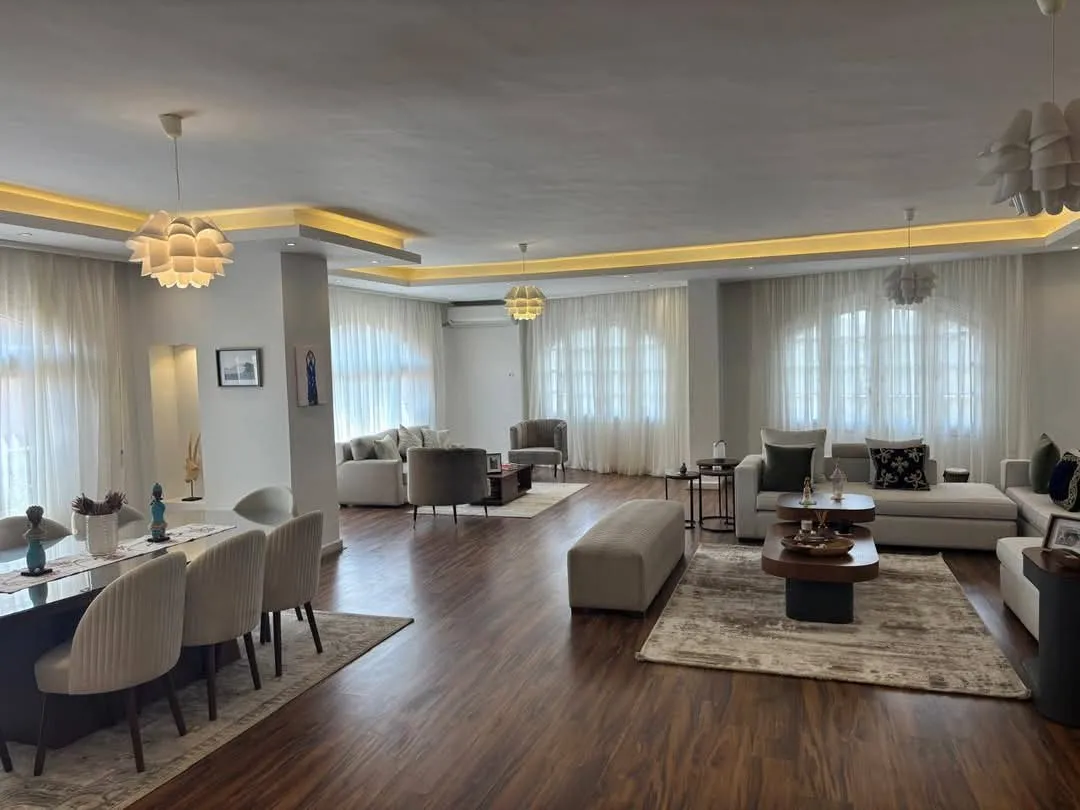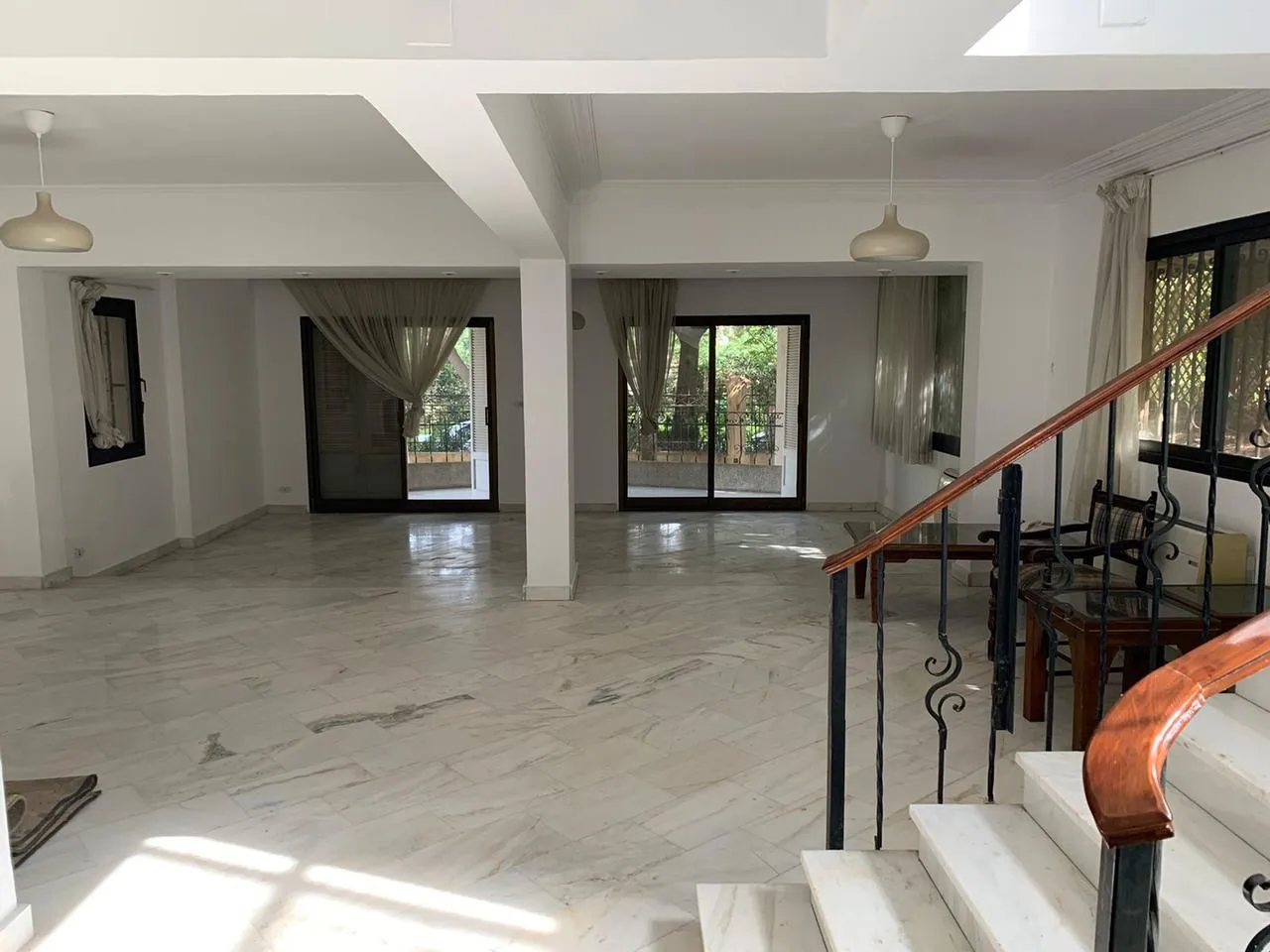Getting it Right: How to Accurately Calculate Your Apartment Size
الكاتب
Ali Ashour
الوقت
15 دقيقة
اللغة
الانجليزية
كتبت بتاريخ:
4/9/2024
تم التحديث:
4/9/2024
Getting it Right: How to Accurately Calculate Your Apartment Size
Measuring the square footage of an apartment is more than just a calculation; it's a crucial step in defining the value of a property and ensuring the space meets your living standards. Whether you're moving, renting, or looking to understand the nuances of apartment types, knowing the exact size of your living space—including the specifics of apartment size appliances and furniture—plays a significant role in planning and budgeting. This foundational metric guides decisions from selecting the right one-bedroom or three-bedroom apartment to optimizing home offices, influencing rents, and even determining the type of apartment buildings suitable for your lifestyle.

The process of calculating apartment size, while seemingly straightforward, involves understanding key terms such as Gross Living Area (GLA) and adhering to standards like those set by ANSI. For anyone navigating the rental market or planning a move, mastering this aspect of property assessment ensures an informed choice when comparing units. This article will delve into strategies for accurately identifying apartment sizes, the impact of size on budget considerations, and pragmatic advice for making the most of your space, whether through clever furniture arrangements or choosing the right apartment size refrigerator.
Identifying Your Living Space Requirements
Identifying your living space requirements is a critical first step in finding an apartment that not only fits your lifestyle but also your budget. Understanding tenant priorities, such as the average apartment size in the United States being 1,015 square feet, provides a benchmark for what you might expect in the market. However, personal needs can vary greatly, with most studies suggesting that 100-400 square feet per person is sufficient, particularly for those living alone. This variation underscores the importance of tailoring your search to your specific needs.
When determining the size of your future apartment, consider the following:
- Current Living Space: Start by measuring the square footage of your current living space. This gives you a concrete figure to work with and helps set a baseline for what you need.
- Monthly Budget: Factor in your monthly budget, including rent, utilities, and groceries. This will help narrow down the size and type of apartments within your financial reach.
- Apartment Layout and Features: Pay close attention to the layout during apartment tours. Does the space align with your daily routines? Is there enough room for your furniture and belongings? Make sure to measure your furniture beforehand and visualize it within the space.
- Roommates, Family, & Pets: Account for the space needs of everyone who will be living in the apartment, ensuring there's ample room for comfort and privacy.
For those considering studio apartments or looking to maximize smaller spaces, creating distinct zones can significantly enhance livability:
- Divide Your Space: Use room dividers or furniture arrangements to separate your studio into living, sleeping, and dining areas. For example:
- Float the sofa in the middle of the room to delineate the sitting area from the bedroom space.
- Use a bookcase or curtain as a room divider to create privacy in the bedroom zone.
- Functional Zoning: Designate specific areas for different activities to help organize the space and make it feel larger. This could include a corner for a home office, a defined dining area, or a cozy reading nook.
By carefully considering these factors and employing strategic design techniques, you can ensure that your next apartment not only meets your size requirements but also supports your lifestyle and budget.
Understanding Apartment Layouts and Sizes
Understanding the layout and size of an apartment is crucial in determining whether it will meet your needs and lifestyle. Here's a breakdown to guide you through this process:

Apartment Types and Their Average Sizes
- Studio Apartment: Typically ranges from 300-600 square feet. Ideal for singles or couples, offering an open floor plan without a separate bedroom.
- 1-Bedroom Apartment: Features a separate bedroom, providing more privacy and distinct living areas. Sizes vary but are designed for single occupants or couples.
- 2-Bedroom Apartment: Offers two separate sleeping areas plus a living room, suitable for small families or roommates.
- Micro Apartments: Single room apartments sized between 160-370 square feet, perfect for those prioritizing location over space.
- Loft Apartment: Open and roomy vibe with high ceilings, often featuring unique architectural elements like exposed brick walls.
Calculating Square Footage
To accurately calculate the square footage of an apartment, follow these steps:
- Measure Each Space: Use a measuring tape to find the length and width of each room, closet, and hallway.
- Calculate Individual Areas: Multiply the length by the width to get the square footage for each area.
- Sum Total Square Footage: Add the square footage of all spaces to determine the total size of the apartment.
- Consider Non-Livable Areas: Remember to exclude spaces like patios, balconies, and garages from your calculations.
Impact of Layout on Perceived Space
- Open Floor Plans: Can make smaller apartments feel larger by removing barriers between living areas.
- Use of Furniture: Strategically placing furniture can help define separate zones, such as sleeping and living areas, in studio or open-plan apartments.
- Natural Light: Apartments with ample windows can feel more spacious and inviting.
- Storage Solutions: Built-in storage and clever use of space can greatly enhance the functionality of smaller apartments.
When evaluating an apartment, consider both the raw square footage and how the layout contributes to the overall feel of the space. Remember, a well-designed smaller apartment can often feel more spacious and functional than a larger, poorly designed space.
The Role of Budget in Choosing Apartment Size
When considering the role of budget in choosing apartment size, it's essential to break down expenses into two categories: fixed and variable. This distinction helps in planning and managing finances effectively.
- Fixed Expenses:
- Rent: Should not exceed 30% of monthly income.
- Utilities: Includes electricity, natural gas, water, internet, and cable.
- Insurance Premiums: Renter's insurance covers belongings in case of theft or damage.
- Loan Payments: Consistent monthly obligations.
- Security Deposits: Typically equal to one month's rent but may vary.
- Miscellaneous Fees: Can include pet fees, garbage pickup, pest control, parking, storage/garage, and administration fees (usually around $100 for background checks and credit runs).
- Utility Deposits: Required for services to be in the tenant's name.
- Variable Expenses:
- Groceries
- Dining Out
- Hobbies
- Entertainment
- Gas
- Subscriptions
- Personal Care
To manage these expenses effectively, consider the 50/30/20 budget rule, suggesting allocation of 50% of monthly income for necessities (including rent and utilities), 30% for discretionary spending, and 20% for savings or debt repayment.
Strategies to Reduce Costs:
- Opt for living arrangements that can significantly cut down expenses, such as:
- Living with a Partner or Roommates: Sharing the rent and utilities can drastically reduce individual financial burdens.
- Choosing a Studio or Basement Apartment: Smaller spaces often come with lower rent.
- Location: Living on the outskirts of a city can offer more affordable options.
- Storage Solutions: Renting a storage unit for seldom-used items or selling/donating unnecessary belongings can free up space and potentially reduce the need for a larger, more expensive apartment.
Before finalizing an apartment, it's crucial to:
- Consider All Fees: Beyond the base rent, be mindful of additional costs.
- Run Numbers and Ask Questions: Ensure clarity on all potential expenses.
- Start Saving for Initial Move-In Costs: Preparation for security deposits, first month's rent, and other initial fees.
Remember, rents have been on the rise, increasing by 28% over recent years. Hence, understanding and planning for these expenses is more critical than ever.
Practical Tips for Maximizing Apartment Space
Maximizing apartment space requires a blend of creativity and practicality. Here are targeted strategies to make the most of every square inch:

- Optimize Storage Spaces:
- Use slim hangers in closets to save space.
- Install hooks on walls for items like coats, bags, and jewelry, freeing up drawer and shelf space.
- Mount a wall rack for pots and pans in the kitchen, and use over-the-door racks for shoes and accessories.
- Employ storage ottomans and coffee tables with hidden compartments for blankets, books, and other items.
- Add risers to pantry shelves for better organization of cans and non-perishables.
- Strategic Furniture and Organizers:
- Choose multi-purpose furniture that serves more than one function, such as a bed with drawers underneath or a desk that folds up against the wall.
- Install two rails at different heights in closets to double hanging space.
- Use baskets and bins for organizing items in entryways, under beds, and in closets.
- Incorporate lazy Susans in cabinets and pantries for easy access to spices, condiments, and small containers.
- Add floor-to-ceiling shelves, keeping frequently used items on lower shelves for easy reach.
- Decluttering and Space-Saving Tips:
- Discard unnecessary possessions and replace bulky storage boxes with clear plastic containers for better visibility and organization.
- Hang plants from ceilings or slanted walls to add greenery without taking up floor space.
- Roll in a tiered storage cart as a versatile accessory for kitchen supplies, bathroom essentials, or craft materials.
- Use slim-profile shelves on walls for books or frames, conserving floor space.
- Hide clutter in decorative bins or baskets, and consider a radiator cover to conceal bulky radiators stylishly.
By implementing these practical tips, residents can create a more spacious and organized living environment, even in the smallest of apartments.
Conclusion
Through the exploration of determining, calculating, and maximizing apartment spaces, this article has delved into foundational aspects crucial for anyone looking to find an apartment that aligns with their lifestyle and financial realities. We've underscored the importance of accurate measurements, effective budgeting, and strategic space utilization, highlighting how each element plays a vital role in enhancing living conditions and making informed housing decisions. By understanding the nuances between different apartment types, from studio to loft apartments, and employing strategies for efficient space utilization, readers are equipped with the knowledge to optimize their apartment selections and layouts for a more comfortable living experience.
Reflecting on the insights shared, it's clear that the journey to selecting the ideal apartment goes beyond mere square footage. It involves a holistic consideration of budget considerations, spatial needs, and personal preferences, all of which contribute to the ultimate goal of creating a home that feels spacious, functional, and uniquely yours. As we conclude, remember the significance of careful planning, innovative thinking, and mindful budgeting in navigating the complexities of the rental market. These strategies not only pave the way for a more efficient use of space but also ensure a harmonious balance between comfort, style, and affordability in your next apartment.






